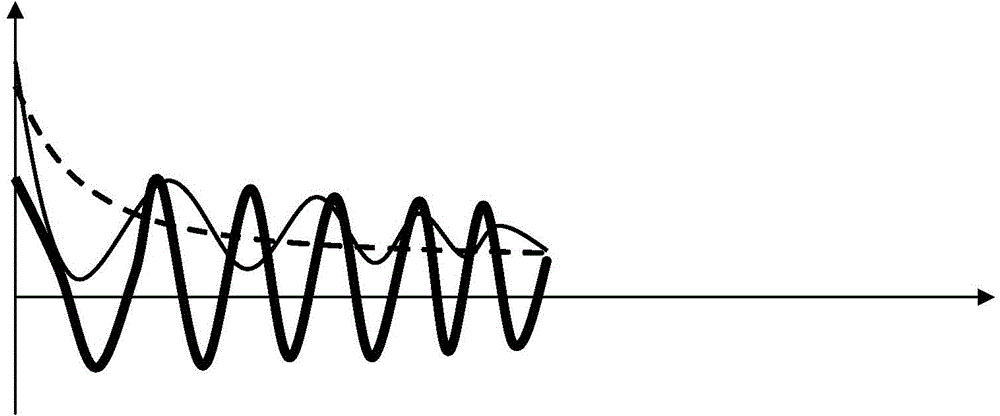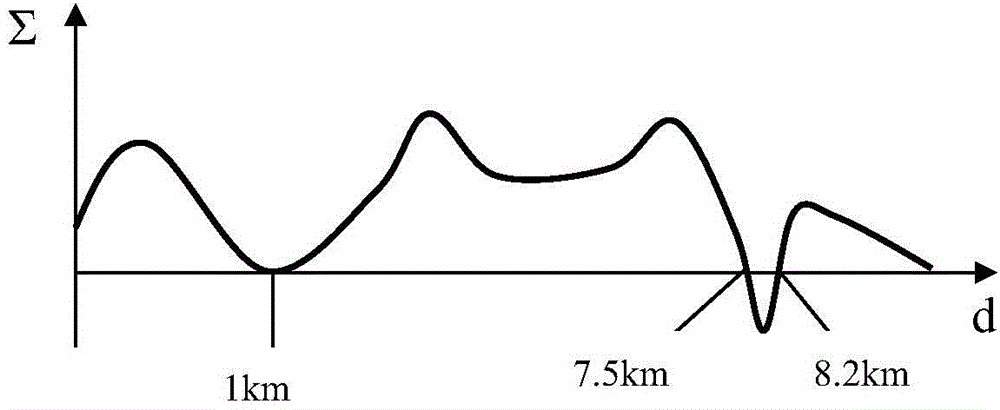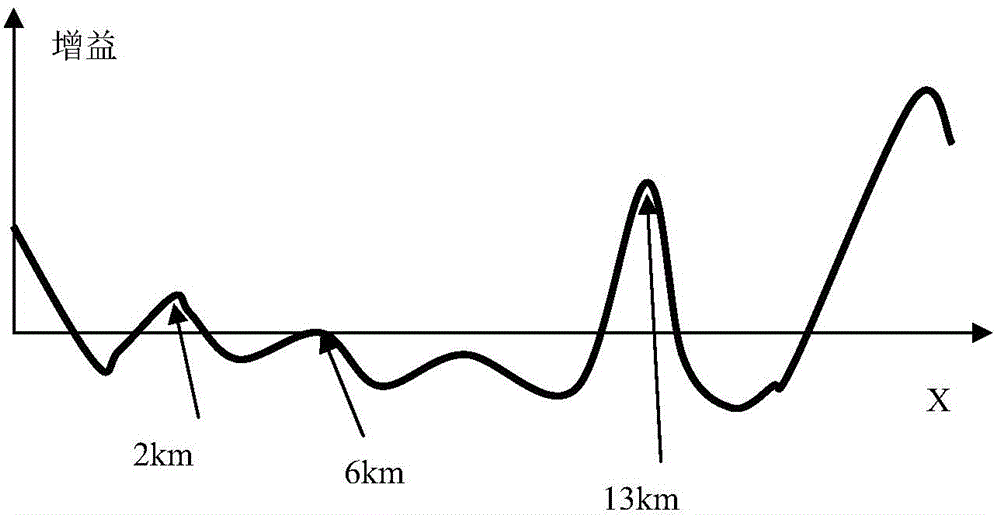Cable fault detection and analysis method
An analysis method and technology for cable faults, applied in directions such as fault locations, which can solve problems such as large errors in intercepted frequency bandwidth and numerical errors.
- Summary
- Abstract
- Description
- Claims
- Application Information
AI Technical Summary
Problems solved by technology
Method used
Image
Examples
Embodiment 1
[0056] Such as figure 1 , figure 2 shown. Fault detection and analysis for 35kV, 11km long XLPE cable with remote short circuit, including the following steps.
[0057] The first step is to apply a sweep signal with a frequency range of 0-500MHz and a step value of 0.1Hz to the cable under test, and then collect the voltage time domain signal corresponding to each sweep frequency input signal and the current flowing through the cable insulation layer to form a loop Time-domain signal, and calculate the frequency-domain impedance and phase of the cable, and draw the continuous impedance-frequency curve Z(f) and phase-frequency curve Φ(f), such as figure 1 shown.
[0058] In the second step, on the phase-frequency curve Φ(f) drawn in the first step, find the frequency f corresponding to any two adjacent phase zero points 11 =20.1kHz, f 22 =28.2kHz, calculate the frequency difference Δf=|f 11 -f 22 |=8.1kHz, then substitute the frequency difference Δf into the formula V ...
Embodiment 2
[0082] Such as image 3 , Figure 4 shown. Carry out fault detection and analysis for 35kV, 80km long, XLPE cables, including the following steps.
[0083] The first step is to apply a sweep signal with a frequency range of 0-500MHz and a step value of 0.1Hz to the cable under test, and then collect the voltage time domain signal corresponding to each sweep frequency input signal and the current flowing through the cable insulation layer to form a loop Time-domain signal, and calculate the frequency-domain impedance of the cable, and draw a continuous impedance-frequency curve.
[0084] The second step is to find the frequency f corresponding to any two adjacent impedance peak points on the impedance frequency curve drawn in the first step 11 =2.66kHz, f 22 =3.91kHz, calculate the frequency difference Δf=|f 11 -f 22 |=1.25kHz, then substitute the frequency difference Δf into the formula V r =(1+ε)D×2×Δf / V 0 =(1+1%)80000×2×1.25×10 3 / 300×10 6 , calculate the signal re...
Embodiment 3
[0089] Such as Figure 5 , Figure 6 shown. Carry out fault detection and analysis for 35kV, 5km long, XLPE cables, including the following steps.
[0090] The first step is to apply a sweep signal with a bandwidth of 1GHz and a step value of 10Hz to the tested cable, and then collect the voltage time domain signal corresponding to each sweep frequency input signal and the current time domain signal flowing through the cable insulation layer to form a loop, And calculate the frequency domain impedance and phase of the cable, and draw the continuous impedance frequency curve and phase frequency curve.
[0091] The second step is to find the frequency f corresponding to any two adjacent impedance peak points on the impedance frequency curve drawn in the first step 11 =103.75kHz, f 22 =118.96kHz, calculate the frequency difference Δf=|f 11 -f 22 |=15.21kHz; On the phase frequency curve drawn in the first step, find the frequency f' corresponding to any two adjacent phase ze...
PUM
| Property | Measurement | Unit |
|---|---|---|
| Equivalent capacitance | aaaaa | aaaaa |
Abstract
Description
Claims
Application Information
 Login to View More
Login to View More - R&D
- Intellectual Property
- Life Sciences
- Materials
- Tech Scout
- Unparalleled Data Quality
- Higher Quality Content
- 60% Fewer Hallucinations
Browse by: Latest US Patents, China's latest patents, Technical Efficacy Thesaurus, Application Domain, Technology Topic, Popular Technical Reports.
© 2025 PatSnap. All rights reserved.Legal|Privacy policy|Modern Slavery Act Transparency Statement|Sitemap|About US| Contact US: help@patsnap.com



